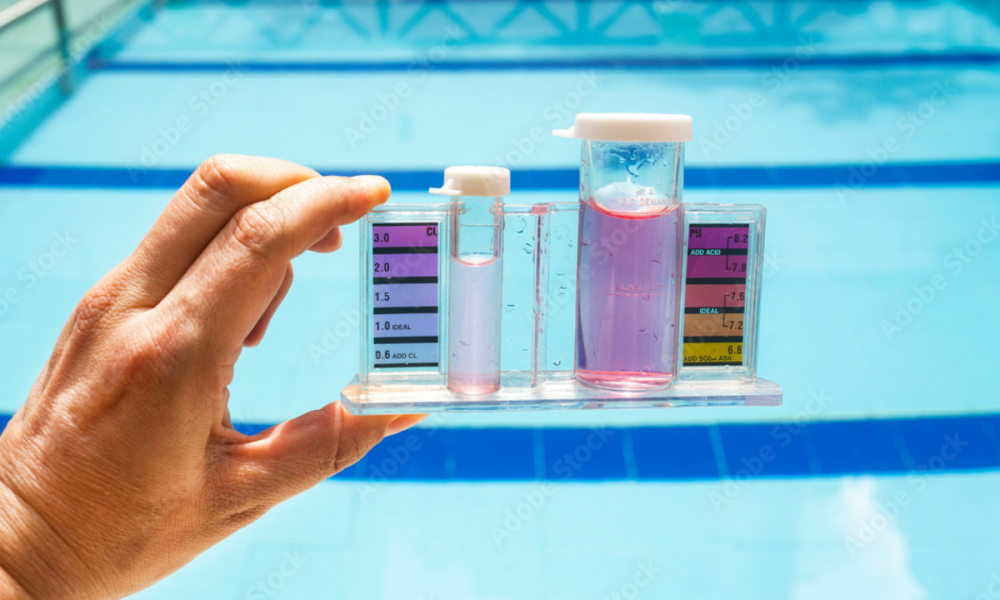Definition of Phosphates
When phosphoric acids come into contact with certain metals, phosphates are created. The majority of natural sources can be found in rivers and lakes, oceans or rock mined. The United States is a major producer of phosphate through mining. Phosphates is ubiquitous throughout the world. You can find them in many products such as detergents, haircare products, fertilizers, and soda pop. Many foods contain phosphate, which is an important nutrient in muscle growth. Several ways exist for phosphate to enter pool water. Metal sequestering product that contains phosphoric acid or phosphonic acids and tap water are the two main sources of phosphates.
Phosphates found in fill water and other hidden sources
It’s true, the water you use to fill your pool is a significant source of . The U.S. Environmental Protection Agency has mandated drinking water municipalities to follow an anticorrosion process. The purpose is to protect drinking water from contamination due to corrosion of old lead-based pipes. The EPA suggests using phosphate buffers such as zinc orthophosphate. The result of adding zinc phosphate to the water supply will be high ortho-phosphate levels. Some reports have indicated that phosphate levels from the tap can reach 1000 parts per billion. Understanding that phosphates come in different forms is essential. sodium-phosphate and polyphosphates are examples of combined forms. These compounds are found in many cleaning agents and chemicals we use for pools. Some non-fuming acid may contain sodium. The use of these acids can cause excessive phosphate build-up. Even some of the binding agents used for chlorine tablets contain phosphate-based compounds.
Phosphate In Pool Water
What happens if phosphates are found in the water of a pool? Others say that phosphates don’t cause a problem when a pool is well maintained. Some claim that phosphates are the determining factor in an algal outbreak. Truthfully, it’s somewhere in the middle. Understanding how phosphate affects pool maintenance is crucial. Phosphate, one of the main ingredients in fertilizer, is a very important ingredient. Algae is a type of plant and we use fertilizer to encourage it. Algae needs three ingredients to grow. Nitrates and CO2 are the main ingredients that algae need to grow. Only phosphate can be controlled and removed. According to science, phosphate can limit growth. This means that algae will grow slower if they can’t get phosphate, even if nitrates and CO2 are present. Some people may be right when they say that phosphates do not cause problems if water is chlorinated and balanced. A party or windstorm, or even excessive heat, in combination with high phosphate, could cause a rapid and resistant algae growth. Higher levels of phosphates will give algae more fuel and cause them to turn the pool green faster. The phosphate in the cells makes it difficult for chlorine or algaecide to work.
Salt Chlorine and Phosphate Generators
High phosphate levels can also increase the chlorine requirement in pools that are well maintained. Despite not reducing chlorine directly, phosphates play a major role in the transition from spores to blooming algae. This process causes more chlorine to be needed in order to combat the growth of algae. It is this process that also causes salt chlor generators to produce more free chlorine.
The phosphate level should not exceed 500 ppb, whether you are using a pool with a salt chlorinator system or one that is regular. Ideal 200 ppb. There will be an interference at 500 ppb with the salt chlorinators to produce enough FAC. If phosphates reach 1,000 ppbs, chlorine demands will increase. When phosphate levels reach extreme levels, over 5,000ppb, water quality is seriously affected.
As mentioned earlier, phosphate is present in a variety of combined forms. All combined forms of the phosphate in pool water will become orthophosphates, or free phosphates. In the pool industry we test for free or ortho phosphates when we test for phosphate. Algae can only use free ortho phosphates as a source of nutrients.
Phosphate Testing and Treatment
To prevent sudden algae outbreaks and poor water quality, phosphate should be checked and managed before algae appear. If you have a pool that is green, the algae must be killed first by using liquid chlorine. After the algae is gone, a phosphate level test should be performed a few days later. A phosphate test may be required based on the amount of phosphate. When a pool becomes overrun with algae, the majority of the phosphate is in the algae. It is impossible to remove or test for phosphates from a pool that has green algae. The phosphate will be released back into the pool water when the algae dies. Many pools have resistant algae because of this characteristic. The algae die with the use of chlorine and algaecide, but they return in a matter of weeks, even if your pool is well maintained. The reason for this is that the initial kill released additional growth nutrients into the pool’s water. It is vital to test for phosphates and remove them after an algae treatment.
Phosphates are measured and can be detected by testing. The chlorine level shouldn’t be more than 5ppb when testing for phosphates. A higher level of chlorine can bleach out the test, giving a falsely low reading. A dilution is recommended when phosphate levels reach extremes of 5,000 ppb. For reagent tests, a ten-fold dilution of the test solution is recommended. To achieve this, add nine parts of distilled to one part pool water. The result of this mix is then multiplied by ten. In some cases, phosphate levels are extremely high. A dilution can determine if it is better to use a phosphate-removal product or if draining and diluting would be more effective. Many scientific studies have shown that phosphate can be a pollutant of our waterways and also found in fill water. It is not a question of if phosphate is present in pool water, but rather what the source is and how much there is. This is why it’s important to test the source water for phosphate spikes regularly. It is also best to use metal removers that do not contain phosphates, such as EDTA and citric acid.
The best way to remove phosphate is by removing it regularly. This can be done weekly, monthly or even seasonal depending on the level. It is important to manage and keep levels at or below 200 ppb. You can find phosphate removers in different strengths that will handle anything from 10,000 ppb up to 500 ppb. A concentrated product is recommended for pools with a phosphate level above 10,000 ppb. When a high level of phosphate is treated with a concentrate product, the water will become excessively cloudy. The use of a clarifier containing chitosan in conjunction with phosphate removers can speed up the process. Once the levels have dropped below 500ppb, a maintenance formula that is less concentrated can be used every week to maintain levels close to ideal.
Tips:
- Phosphate can be measured as parts per billion (PPB). One part per million (PPM), or 1,000 PPB, is one part per million.
- The ideal level of PPB in swimming pools is 200 or less.
- Tests for phosphate should only be performed in water with less than 5 ppm chlorine. The phosphate test will be ruined by high chlorine levels.
- If you have a pool of 1000 PPB and above, it is high.
- The SWG unit is affected by interference at 500 PPB and above.
If algae is present in a swimming pool, it must be removed and treated before adding any phosphate-removing product. When algae dies, it releases phosphate. The best time to remove phosphate is after the algae has died.
Although there are several phosphate compounds, only orthophosphate can be used as a nutrient by algae. The pool industry uses only orthophosphate test kits.
The post Basics of Phosphates for Pools first appeared on PoolMagazine.com. Get the Latest Pool News.





